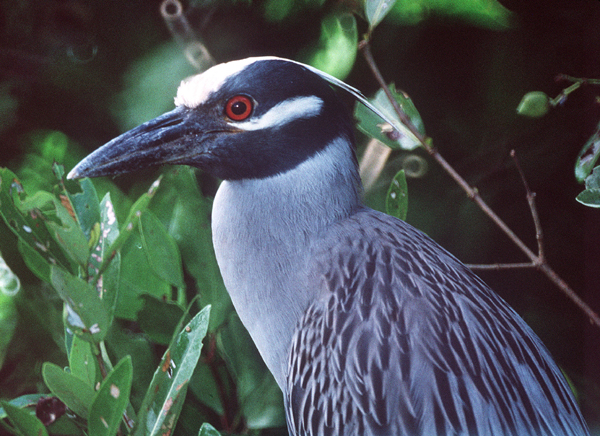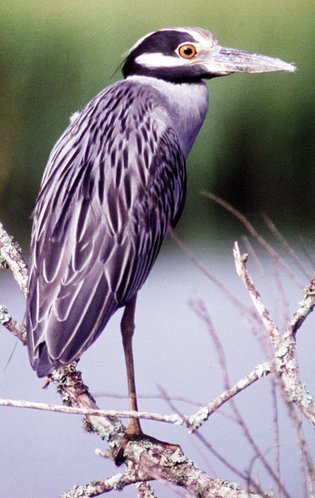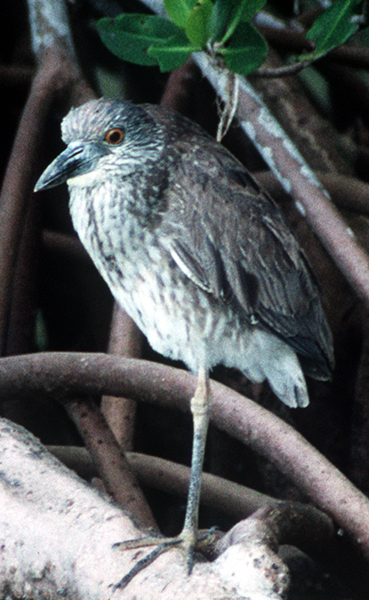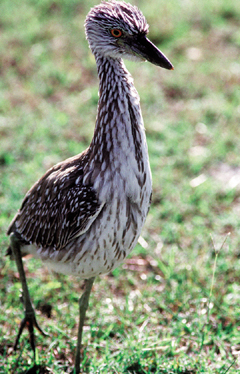|
Yellow-crowned Night-Heron Nyctanassa violacea Yaboa Común,
|
 |
|
Photo: M. Oberle
|
|
IDENTIFICATION: The adult has a gray body, and a striking black-and-white head pattern. Thin white feathers extend behind the crown, but are hard to see from a distance. This Night-Heron's bill is stouter than in the less common Black-crowned Night-Heron. The immature bird is brown with white spots (smaller than the spots on the immature Black-crowned Night-Heron). Length: 51-70 cm.; weight: 650 g. VOICE: A single squawk note. Audio (M. Oberle). HABITAT: Saltwater swamps, lagoons, estuaries, mudflats and ocean shores. HABITS: Feeds mostly at night on small crabs, although it also eats insects, small fish, and other prey, including eggs and chicks of other bird species. It is the least active feeder among the heron species, and stands still for long periods, waiting for prey. The Yellow-crowned Night-Heron is quite often seen at dawn or dusk flying between feeding grounds and daytime roosts in swamp trees. It nests in small colonies located 30-40 feet high in treetops. The bulky nest is made of sticks and contains 2-5 light blue eggs. Both male and female incubate the eggs for about 21-25 days and both care for the young. Chicks fledge at about 25 days. This species does not breed until two years of age. STATUS AND CONSERVATION: A common, permanent resident. Many night-herons migrate from eastern North America to winter in the Caribbean. Because it is most active at night, the Yellow-crowned Night-Heron is more common than many people realize. But its breeding habitat has shrunk as wetlands are destroyed. It was formerly hunted in Puerto Rico. RANGE: From southeastern North America, through lowland Mexico and the Caribbean, to the Galapagos Islands and southeastern Brazil. Typical places to find this species are in the swamps near Cabo Rojo and on the boardwalk at Parque Central in San Juan. TAXONOMY: CICONIIFORMES; ARDEIDAE |
|
 |
|
|
Photo: G. Beaton
|


